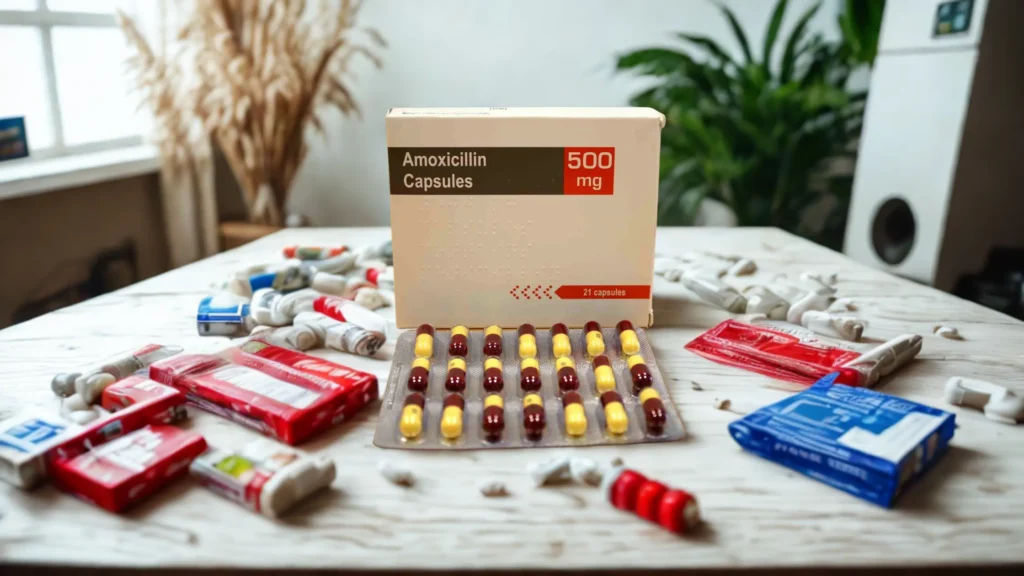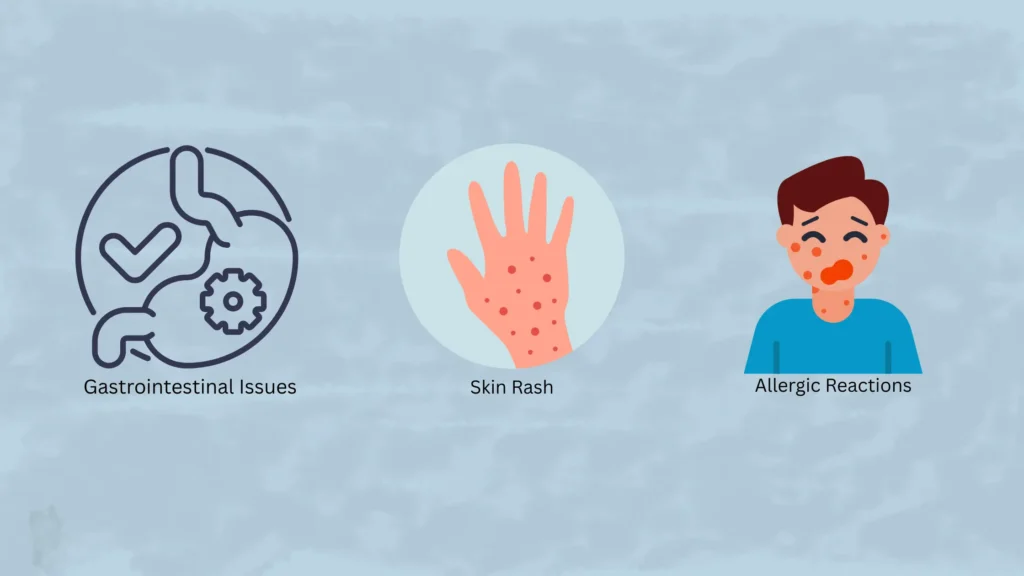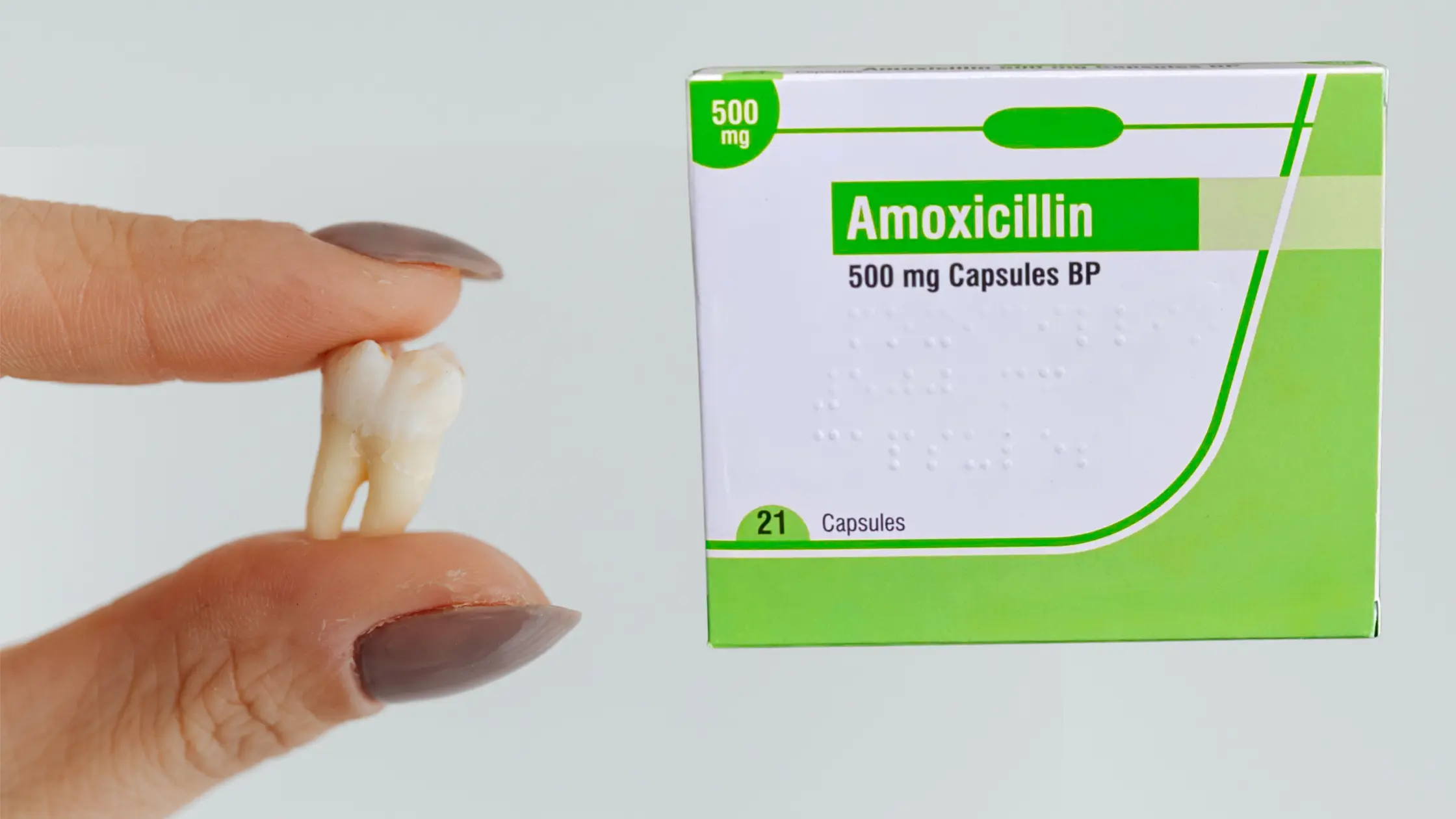Amoxicillin for tooth infection is a cornerstone treatment for bacterial dental infections, recognized for its potency and wide-ranging effectiveness. Tooth infections, also known as dental abscesses, occur when there are untreated cavities, gum disease, or injury to the tooth. These infections have the potential to rapidly deteriorate, leading to intense suffering, swelling, and the development of systemic sequelae, unless addressed in time. In this comprehensive article, we cover all the information you should know about amoxicillin, its mechanism of action to safe usage guidelines, and its use in treating tooth infections with extra consideration on pregnancy and children’s usage.
Table of Contents
- What is Amoxicillin?
- Amoxicillin for Tooth Infection Effectiveness
- Amoxicillin Dosage for Tooth Infection
- Safety of Amoxicillin for Tooth Infections During Pregnancy
- Amoxicillin for Tooth Infection in Children
- Amoxicillin Dosage for Tooth Infection
- How Does Amoxicillin Compare to Other Treatments for Tooth Infection?
- How to Know If Amoxicillin is Working for a Tooth Infection?
- Frequently Asked Questions (FAQs)
- Conclusion: Amoxicillin for Tooth Infection
What is Amoxicillin?

A common treatment for a range of bacterial illnesses is amoxicillin, an antibiotic belonging to the penicillin class. It helps the body’s immune system fight off infections more effectively by preventing the growth of bacteria. Although this drug is frequently prescribed for ailments like ear infections, pneumonia, and urinary tract infections, its use in dental infections is especially noteworthy because of how well it works against common oral bacteria like Streptococcus and Staphylococcus species.
The antibiotic is available in various forms, including capsules, tablets, and liquid suspensions, making it suitable for both adults and children. It’s one of the first-line treatments for bacterial tooth infections because of its strong antibacterial properties, ease of use, and relatively mild side effect profile.
Amoxicillin for Tooth Infection Effectiveness
Tooth infections develop when bacteria invade the pulp or root of the tooth. The resulting infection can cause intense pain, swelling, and pus accumulation. Amoxicillin for a tooth infection works by targeting these bacteria. The antibiotic interferes with the bacteria’s ability to build and maintain its cell wall, causing the bacterial cells to weaken and eventually rupture.
The body’s immune system can eradicate the illness because of this disruption, which stops the germs from proliferating. Amoxicillin also aids in the management of infection-related discomfort, fever, and inflammation by lowering the bacterial burden.
Although amoxicillin for tooth infection works well, it is frequently combined with other dental procedures. In order to eliminate the contaminated material and stop the illness from spreading, dentists may carry out treatments like root canal therapy or drainage.
Amoxicillin Dosage for Tooth Infection
How Much Amoxicillin for Tooth Infection?
The dosage of amoxicillin for tooth infection depends on several factors, such as the severity of the infection, the patient’s age, weight, and overall health. For most adults, the recommended dosage is 500 mg every 8 hours, typically for a duration of 7-10 days. This ensures that the bacteria are sufficiently suppressed and that the infection is fully cleared.
Amoxicillin Dosage for Tooth Infection: How Many Days?
Depending on the circumstances, the typical course of treatment for a tooth infection lasts anywhere from seven to ten days. Even if symptoms subside before the entire course of antibiotics is finished, it is imperative to take the drugs as directed. Antibiotic resistance or a recurrence of the infection may result from abruptly stopping antibiotic treatment.
How Amoxicillin Works to Treat Tooth Infections?
By interfering with the formation of bacterial cell walls, amoxicillin hinders the bacteria’s ability to proliferate and multiply. To keep their shape and defend against external stresses, bacteria depend on their cell walls. Amoxicillin makes the bacteria unstable and ultimately kills them by inhibiting the enzyme that makes the cell wall.
Because it targets the specific bacteria causing the illness, this procedure is especially helpful for tooth infections, helping to reduce symptoms like fever, swelling, and discomfort.
Safety of Amoxicillin for Tooth Infections During Pregnancy

Is Amoxicillin Safe During Pregnancy?
Pregnancy imposes special requirements on the organism, the use of medicine has to be calculated. Amoxicillin for a tooth infection is generally regarded as safe for pregnant women. It has been labeled a category B drug by the U.S. FDA which means that there was no identified risk to the fetus in animal studies although there is not much data available in humans. Even so, the advantages of curing tooth infection using amoxicillin usually overshadow the dangers to the unborn baby. With that said, all antibiotic treatment in pregnancy must be under medical direction. Pregnant women must speak with their healthcare provider about their dental and medical history to ensure that the dosage and various treatment plans are specially tailored to their conditions.
What are the Risks of Not Treating a Tooth Infection During Pregnancy?
Untreated tooth infections during pregnancy can lead to complications such as:
- Spread of Infection: The infection can spread to surrounding tissues, including the jaw, throat, and even the bloodstream. This can lead to more severe health problems, such as cellulitis or sepsis, which may require hospitalization or more intensive medical treatment. In some cases, the infection can also travel to the bones, causing osteomyelitis, a potentially serious condition.
- Preterm Labor or Miscarriage: While rare, untreated infections can contribute to preterm labor or pregnancy complications. Infections can cause systemic inflammation, which may trigger early labor. Additionally, high levels of inflammation can affect the placenta, increasing the risk of fetal complications, including miscarriage or low birth weight.
- Severe Pain and Discomfort: A dental infection can worsen, causing significant pain and swelling, which may be challenging to manage without proper treatment. As the illness worsens, it can also cause respiratory issues, fever, and difficulty swallowing, which makes it more difficult to concentrate on everyday tasks. The emotional health of a pregnant woman may also be impacted by this persistent discomfort.
In order to avoid these side effects, amoxicillin for tooth infection is essential, but it should always be taken under a doctor’s supervision.
Amoxicillin for Tooth Infection in Children

Amoxicillin Dosage for Children
Amoxicillin is safe for children and is often used to treat tooth infections in young patients. The dosage for children is based on their weight. Typically, pediatric dosages range from 20 to 40 mg per kilogram of body weight per day, divided into three doses. For example, if a child weighs 30 kg (66 lbs), the total daily dose would be between 600 mg and 1,200 mg, split across the day.
Is Amoxicillin Safe for Kids?
Yes, children frequently receive prescriptions for amoxicillin for a tooth infection. It works well to treat a range of bacterial infections, including tooth infections, and is generally well tolerated. The right dosage must be used, nevertheless, taking into account the child’s age and weight. Parents are responsible for closely adhering to the recommended dosage and keeping an eye out for any negative effects.
Common Side Effects of Amoxicillin in Children

Though rare, children may experience some side effects when taking amoxicillin, including:
- Gastrointestinal Issues: Nausea, vomiting, and diarrhea are typical side effects. These symptoms are often brought on by amoxicillin, which upsets the delicate balance of good bacteria in the gut. Dehydration can occasionally result from these gastrointestinal issues, which can impact a child’s appetite and hydration levels in addition to generating further discomfort. It is crucial to get advice from a healthcare professional if these symptoms continue.
- Skin Rash: Some kids can have a rash, especially if they’re allergic to penicillin. Itching may accompany this rash, which might manifest as hives or red, blotchy spots. Although a minor rash is typically not dangerous, it’s still vital to keep an eye out for any changes or worsening of the rash. Seek medical help right once if the rash spreads quickly or if there are other indications of a serious response.
- Allergic Reactions: Although rare, severe allergic responses can happen. Breathing problems, facial or throat puffiness, and lightheadedness are possible symptoms. If left untreated, these reactions can worsen rapidly and provide major health hazards. If you experience any symptoms of anaphylaxis, like trouble breathing or swallowing, you should get emergency medical help right away.
If any severe side effects occur, it is crucial to contact a healthcare provider immediately.
Amoxicillin Dosage for Tooth Infection

The following table offers a thorough analysis of amoxicillin dosage for tooth infections in order to further understand the suggested dosage for different patient groups:
| Patient Group | Dosage | Duration | Notes |
| Adults (Healthy) | 500 mg every 8 hours | 7-10 days | Standard dose for treating most tooth infections. |
| Children (6 months – 12 years) | 20-40 mg per kg of body weight per day, divided into 3 doses | 7-10 days | Adjusted based on child’s weight; pediatric doses typically range from 600 mg to 1,200 mg per day. |
| Pregnant Women | 500 mg every 8 hours | 7-10 days | Considered safe during pregnancy (FDA category B), but should be taken under medical supervision. |
| Children (Under 6 months) | 20 mg per kg of body weight per day, divided into 3 doses | 7-10 days | Dosage adjusted based on weight, always consult a pediatrician for precise dosing. |
How Does Amoxicillin Compare to Other Treatments for Tooth Infection?
Other antibiotics may be used, depending on the type and severity of the infection, even though amoxicillin is frequently the first-line treatment for tooth infections. For example:
- Patients with anaerobic bacterial infections or penicillin allergies may be administered clindamycin. These microorganisms flourish in conditions devoid of oxygen, such abscesses. Although it can have additional negative effects, like gastrointestinal problems, clindamycin efficiently prevents the creation of proteins by bacteria.
- Penicillin is another option, though amoxicillin is generally preferred due to its broader spectrum and easier dosing regimen. While both antibiotics work similarly to disrupt bacterial cell walls, amoxicillin offers better absorption and a wider range of effectiveness.
How to Know If Amoxicillin is Working for a Tooth Infection?

After beginning amoxicillin for a tooth infection, patients usually experience relief 48 to 72 hours later. Fever, edema, and pain should all start to go away. It’s crucial to speak with a healthcare professional if the symptoms intensify or do not go away because this could mean that additional treatment, like a new antibiotic or dental operation, is required.
Frequently Asked Questions (FAQs)
1. Can I take amoxicillin for a tooth infection without seeing a dentist?
While amoxicillin can alleviate symptoms, it does not treat the underlying cause of the infection. You should always consult a dentist to before taking amoxicillin for tooth infection address the root cause, whether it involves a root canal, drainage, or extraction.
2. How long does it take for amoxicillin to work for a tooth infection?
The majority of patients begin to feel better in a few days, although complete recovery could take up to a week. To make sure the infection is completely eradicated, it is essential to finish the entire course of antibiotics.
3. Can I take amoxicillin for tooth infection if I’m breastfeeding?
Yes, nursing moms can safely take amoxicillin for tooth infections. The antibiotic is usually safe for the baby, though small doses may find their way into breast milk. However, before taking any medication while nursing, always get your doctor’s approval.
4. Can amoxicillin cure an abscessed tooth?
Amoxicillin can reduce the infection and alleviate symptoms of an abscessed tooth, but it will not treat the abscess itself. A dental procedure is required to address the abscess, such as drainage or a root canal.
5. Is amoxicillin for Tooth Infection safe for children?
Yes, amoxicillin for tooth infection is safe for children when prescribed at the correct dosage. It is commonly used to treat bacterial infections, including those affecting the teeth.
Conclusion: Amoxicillin for Tooth Infection
Amoxicillin for tooth infection is a potent and efficient antibiotic that can considerably lessen the discomfort and symptoms of tooth infections. Amoxicillin can help get rid of the infection and ease pain whether you’re a child, adult, or pregnant woman. It’s crucial to keep in mind that although the antibiotic might cure the infection, it doesn’t deal with the underlying tooth issue. For the best result, always heed the advice of your healthcare provider, finish the recommended course, and seek dental assistance when needed.
Explore more on Pregnancy Must –
